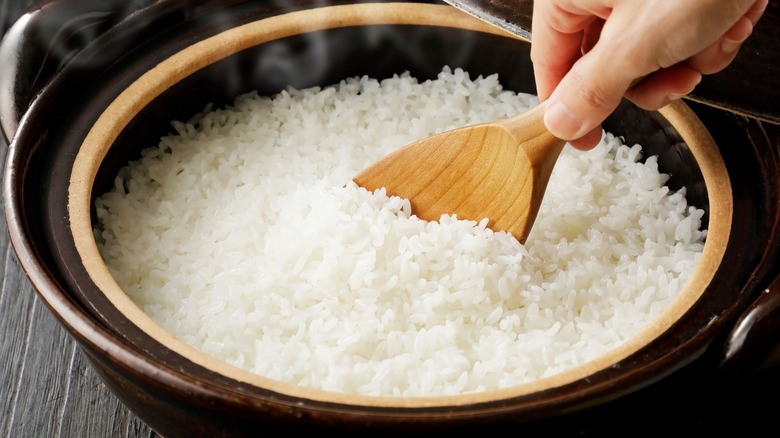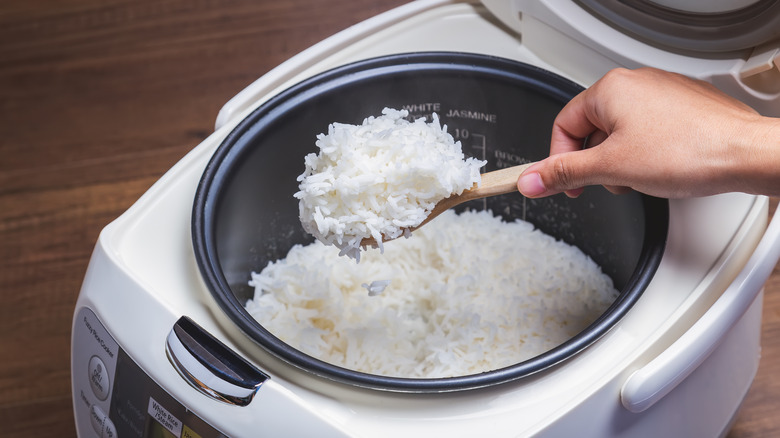The 2 Parts Water, 1 Part Rice Rule Doesn't Always Work: Here's Why
Cooking something as simple as rice can be a challenge. Even when you use the perfect water-to-grain ratio, those coveted easily-separable fluffy grains can be elusive. It doesn't seem fair, especially when some rice-cooking wizards always get it right, even though they simply wash the rice and add a seemingly-random amount of water.
When it comes to cooking rice, you might think that it all boils down to technique, but it's important to know the variety of grain you're working with. The two-part water, one-part rice rule doesn't work for all kinds of rice. And mind you, there are around 40,000 varieties.
Most of us will likely never encounter thousands of those. A handful of varieties like basmati, brown rice, carnaroli, jasmine, sushi, and arborio are commonly consumed, and the quantity of water and cooking time required for each one is unique depending on the size and thickness of the grains. For instance, brown rice takes longer to cook and requires more water than white rice, because it has a coating of bran, endosperm, and germ that isn't removed in the milling process, as it is with white rice.
The 2:1 water-to-rice ratio works for some varieties like parboiled medium grain, white rice, and arborio. In any case, it pays to read the cooking instructions label on the package.
Utensils also make a big difference
Not only does the method used to cook rice affect its taste and texture, but it determines the quantity of water it will take to cook it well. Rice cookers use less water than stovetop cooking pots because the lid is tight and the water turns into steam, which cooks the rice evenly.
As long as you are doing it right and keeping a watchful eye, boiling rice in pots also has its merits, including the ability to remove arsenic using the parboiling-with-absorption method. Per the University of Sheffield, one can retain the nutrients while draining the harmful remnants of arsenic in white rice by partially boiling it in water for five minutes and discarding the water. The remaining rice can then be cooked with fresh water.
Pressure cookers are also a popular choice when it comes to cooking rice. They use less water and can cook rice faster than rice cookers. Researchers have also found that when rice is cooked in pressure cookers, it retains more aroma and turns out softer, per ScienceDirect. Clay pots are also used for maximum flavor and aroma.

